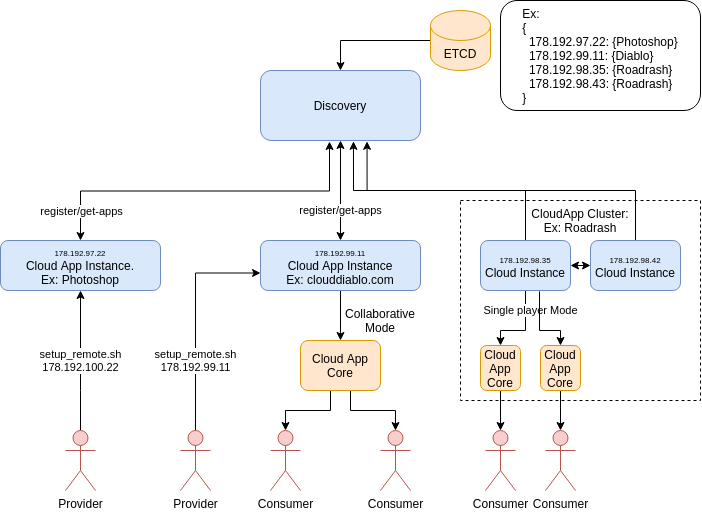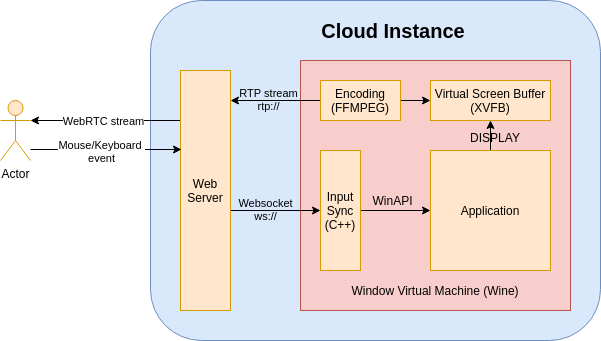Decentralized cloud gaming/cloud application service.
Introduction
CloudMorph is a decentralized cloud gaming/cloud application service. It still follows Cloud Gaming's idea: the application is run on remote servers, screen and user input are streamed back and forth between clients and server in optimal way. On top of that, it builds a decentralized network of cloudapp providers, and consumers, where providers can host their own cloudapp with a given toolset, and consumers can use any app in the network.
Demo Diablo cloudmorph.io hosted by CloudMorph : https://www.youtube.com/watch?v=fkOpOQ-HwFY
Goal
Unlike CloudRetro, a Completed Cloud Gaming solution on Retro Game hosted on dedicated cloud infrastructure, CloudMorph generalizes the system to bring any offline Windows application to a cloud mesh network. The deployment is simplified with a concise tech-stack and codebase. The goal is to create a distributed cloud application system when anyone can contribute their offline application on the platform, and other people can consume it.
Usecases
For Developers
- Experience playing/hosting Cloud Gaming on their own.
- Plugable Cloud gaming module: The cloud gaming core is packaged and virtualized to be easily extended to different tech stacks.
For Consumers.
- Multi-platform: be able to run web-browser, mobile web.
- Collaborative Gaming: Multiple people plays the same game. Ex. Twitch play pokemon, or http://clouddiablo.com/ - A cloudmorph demo.
For Providers
- Playable Teaser: Application's teaser is playable,
Design Goal:
- Mesh network: Providers-Consumers over Peer To Peer communication.
- Modularizable: A concise technical stack to develop/deploy for cloud gaming/ cloud application service.
- Generic/Cross-platform: Run on web browser, web mobile. Target Windows App instead of relying on gaming framework/emulator (like CloudRetro).
- Scalable: Be able to scale on headless machines cluster horizontally.
- One line script deployment.
Demo
| Screenshot | Screenshot |
|---|---|
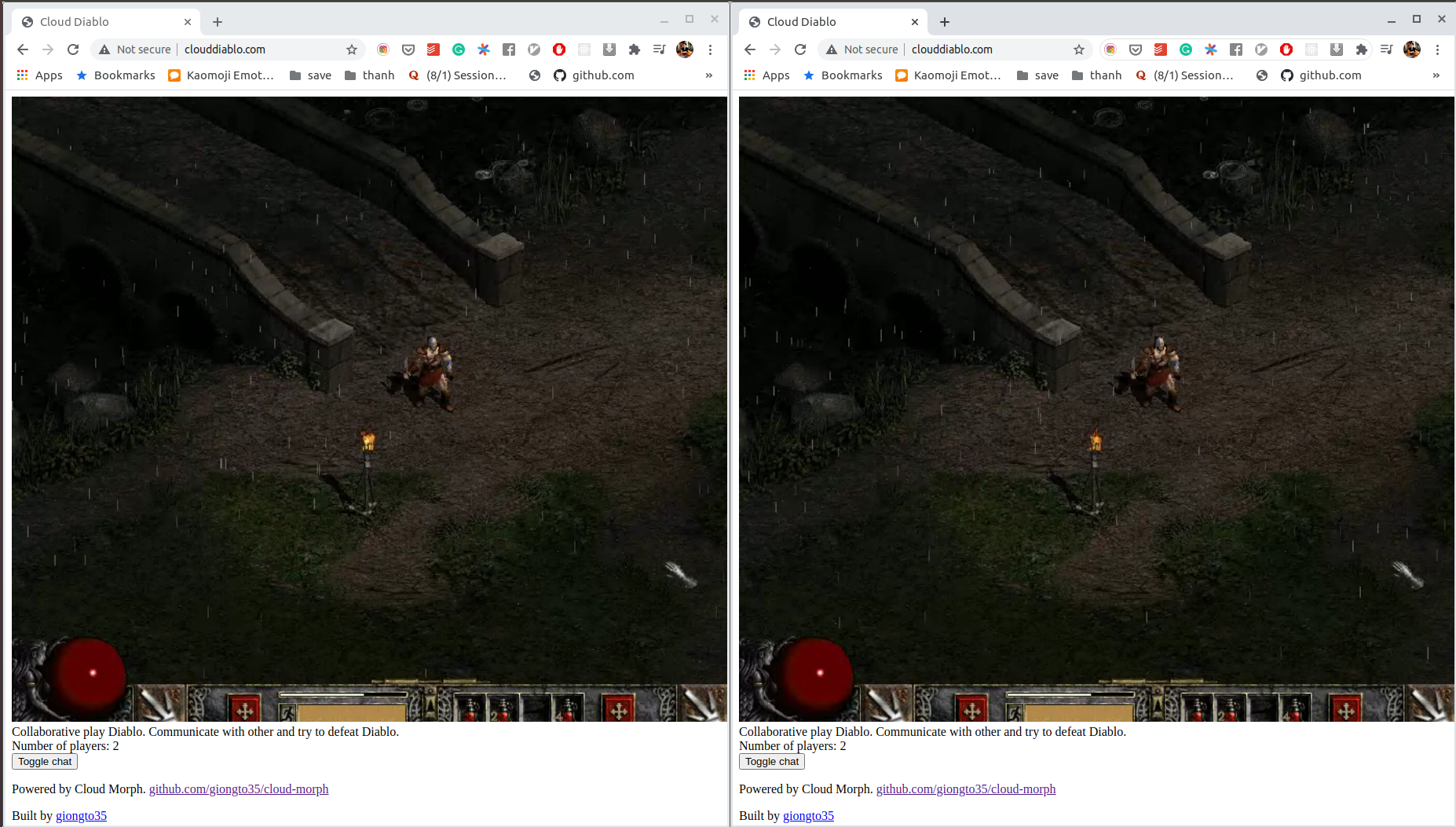 Diablo II Diablo II |
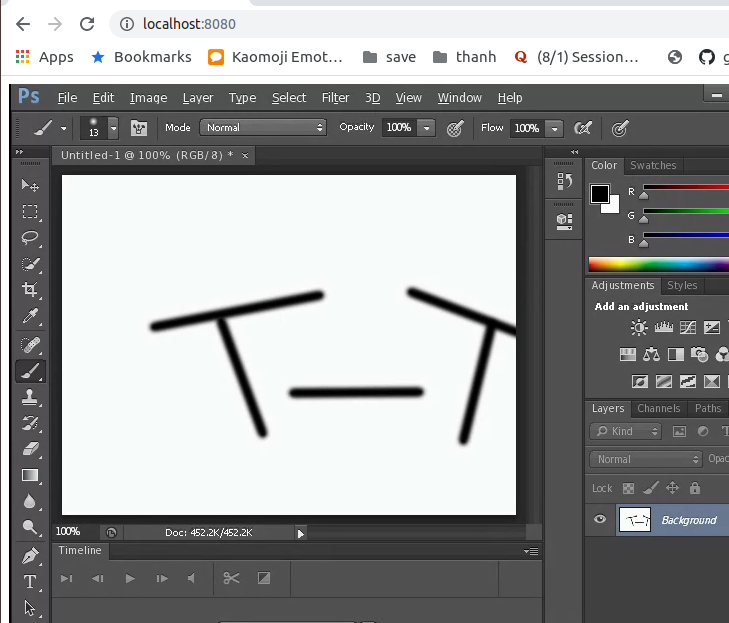 Photoshop Photoshop |
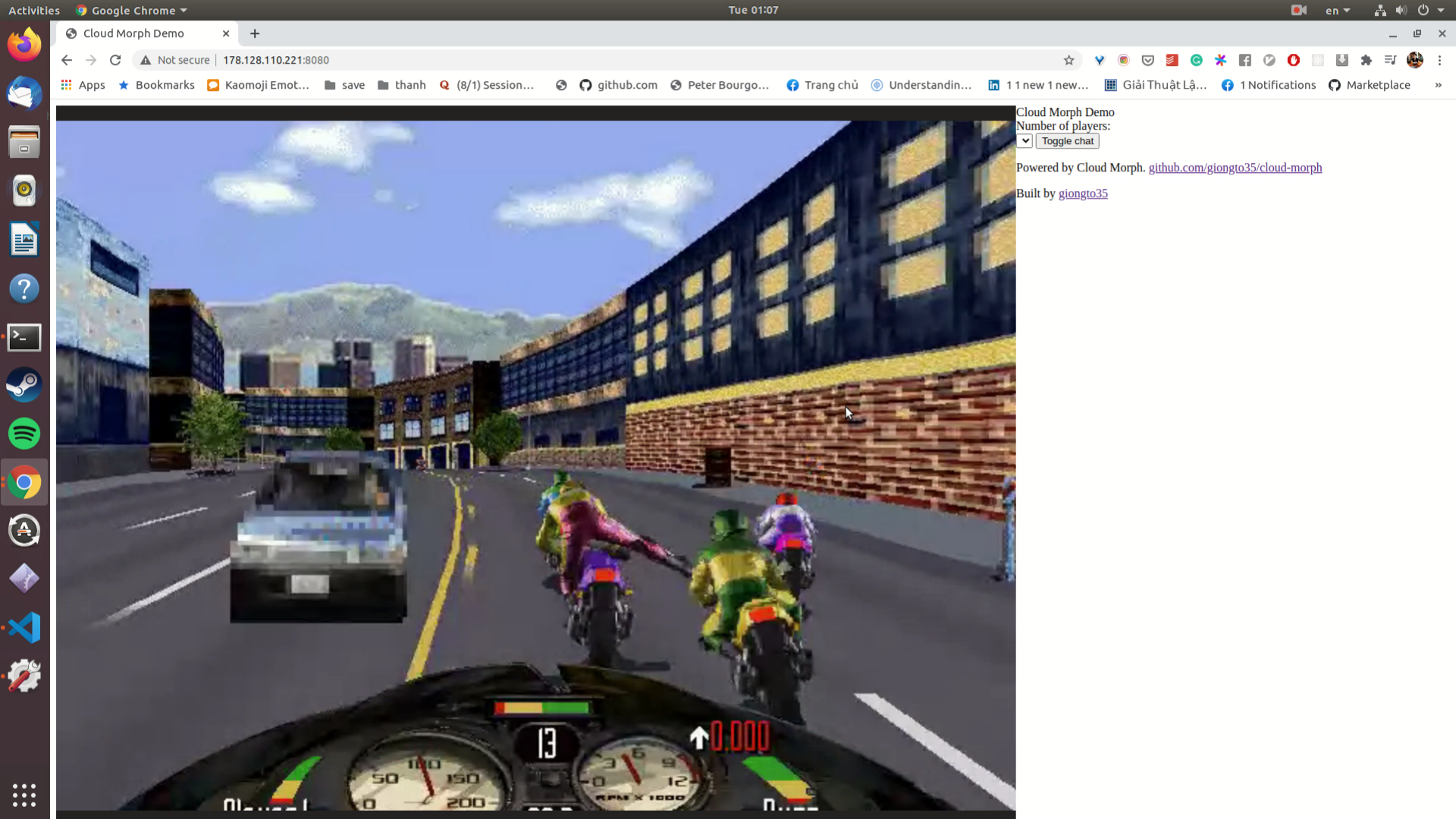 RoadRash RoadRash |
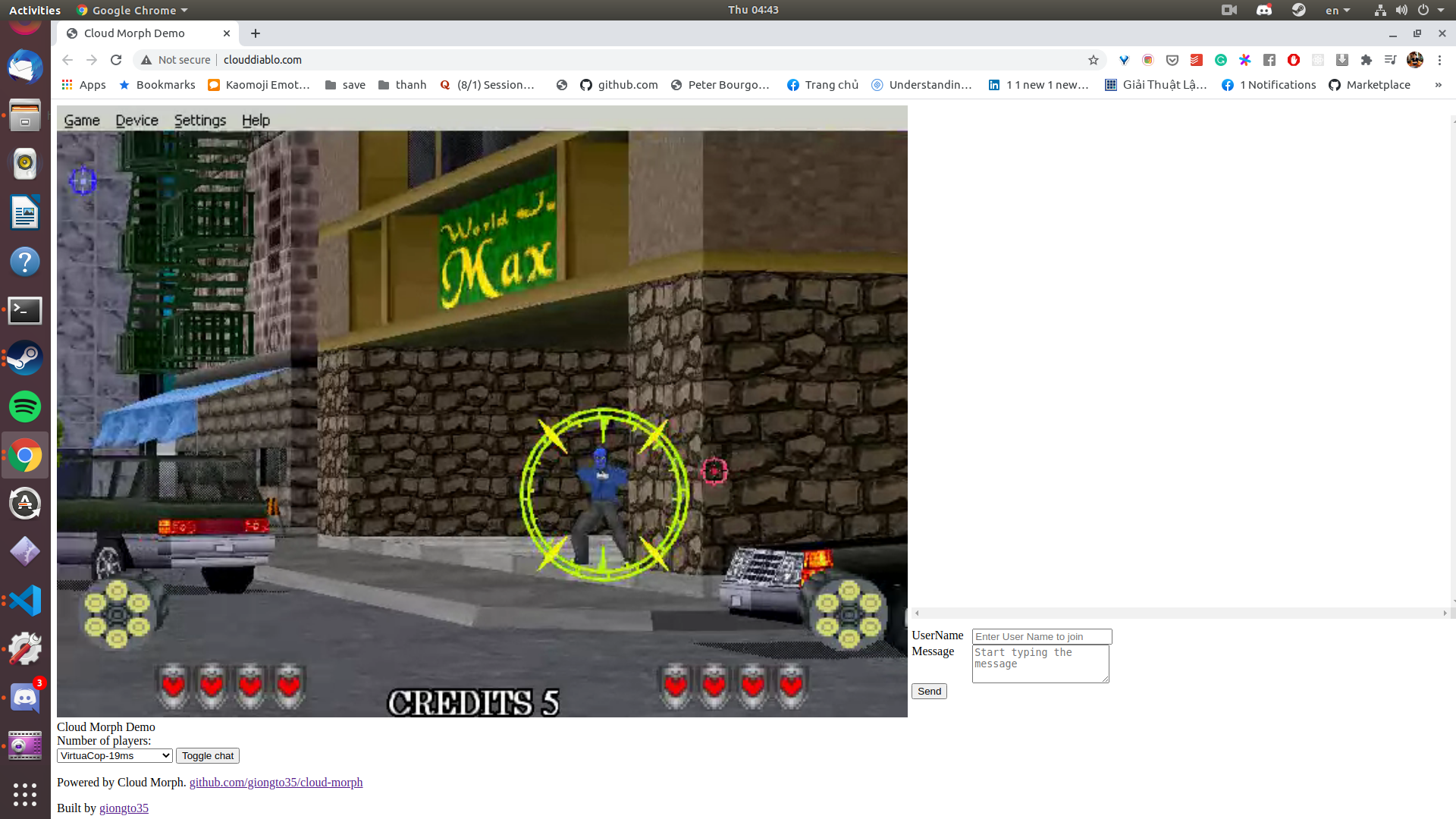 Photoshop Photoshop |
Cloud Morph (Running on US server). You can select other applications in the dropdown and it will be instantly loaded. Cloud Diablo (Running on Singapore server)
Deployment
Foremost, you need an Ubuntu instance with a public network firewall. For example, you can use the given script/create_do.sh to create a digital ocean instance.
After that:
We need 3 in the same folder:
apps: a folder contains the app you want to deploy. For example,DiabloIIconfig.yaml: app config, the app configuration on cloud-morphsetup_remote.sh: a script to deploy your application to server
Example:
setup_remote.sh $ip $mount_path. Ex:./setup_remote.sh 159.89.146.77 /apps/DiabloII- Tutorial Video: https://www.youtube.com/watch?v=w8uCkfZdHVc
Deployment with setup file
- Some offline game/application requires installation. The best flow I can think of is
- Run
interactive-wine.sh bash, it will open environment with bash on mounted volume. After we finish initialization, we will push this volume to remote server using the below line. setup_remote.sh $ip $mount_path syncvolume
Example
There are configuration examples without applications. You can search the app and put it in the same configuration folder.
Development
The service is based on Golang, C++, and Linux X11 utility tools (Xvfb, ffmpeg).
You can set up all dependencies with setup.sh. After that, you can run the go server with
go run server.go
Access to your local at
localhost:8080
Note: the wine application is run in Docker. You can run it without docker by changing run-wine.sh to run-wine-nodocker.sh in server.go for easier debugging.
Design
-
When Webserver starts, Wine Application is spawned inside a container at the same time. However, in the future, Wine Application needs to support multiplex to run multiple applications in the same VM.
-
Input captured from Client is sent to Virtual Machine over Websocket.
-
A C++ script (syncinput.exe) will listen to the event and simulates Windows OS event to Wine Application through WinAPI.
-
Application screen is captured in a Virtual Display Frame Buffer, which is later piped to FFMPEG.
-
FFMPEG will produce the screen stream to a VPX RTP stream.
-
In the end, the core module receives Input as WebSocket event and Output as RTP stream. You can check the interface at
core/go/cloudapp -
Webserver interacts with Virtual Machine using these Input and Output format.
Design choice
Why do I pick Linux Stack and Wine?
- First, I consider writing the whole system in Windows. However, Windows lacks programming utilities, and Linux is more comfortable for me.
- Wine is a Windows Virtual Machine. Its performance is proven in Steam PlayOnLinux. Lutris.
Headless server
- Headless server is a server without display. When you acquire any cloud instances from AWS, Digital Ocean, GCloud..., it is headless because there is no monitor attached to it.
- One of the most challenging problems is to deal with Headless when your application/game always requires a graphic monitor, graphic driver. Being able to run on a Headless server is a goal. We can improvision new application instances and scale gaming sessions properly.
Why XVFB, not X11VNC (Remote access)
- XVFB is a Virtual Frame Buffer. There is no monitor attached to the server, so XVFB is a virtual buffer that can capture image frames going to DISPLAY.
Why TCP socket for interaction between Server and Wine Application.
- Even though Wine application and server stay in the same machine, they theoretically run on different OS. Internal Process Communication becomes challenging and not suitable. Network communication using Websocket over some defined ports can help in this case.
Why Golang, FFMPEG, C++
- FFMPEG is used to grab XVFB Display (built-in functionality) and convert it to the VPX video stream. It can be substituted with GStreamer or any custom encoding solution.
- C++ is chosen because it has good support for WindowsAPI.
- Golang is not really a crucial part of this design. It helps spawn Webserver conveniently. With Pion library in Go, WebRTC streaming becomes really handy.
Roadmap
- Performance improvement.
- Multiplex application sessions. Currently, only collaborative mode is supported, which serves all application's sessions from the same single instance.
- Improve flow to deploy app needs initialization.
- Integrate with Lutris to simplify game initialization.
- Web Mobile controller supprt. Currently, mouse click is simulated.
- Packaging frontend as a component.
